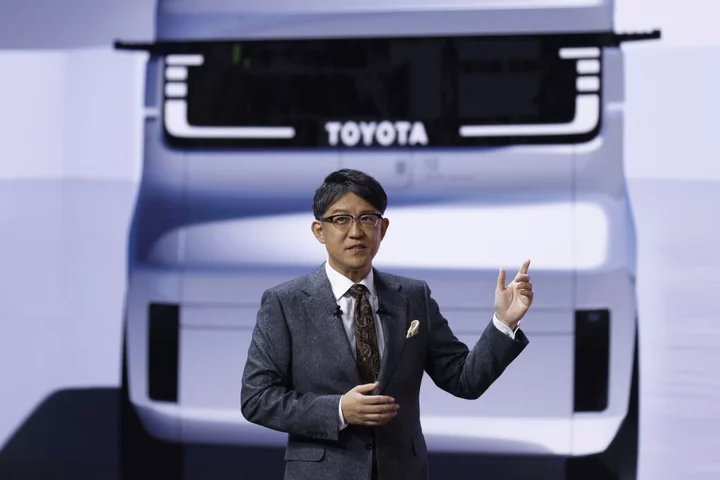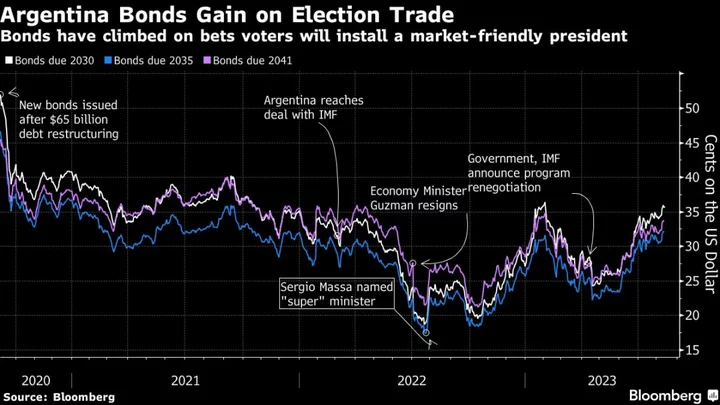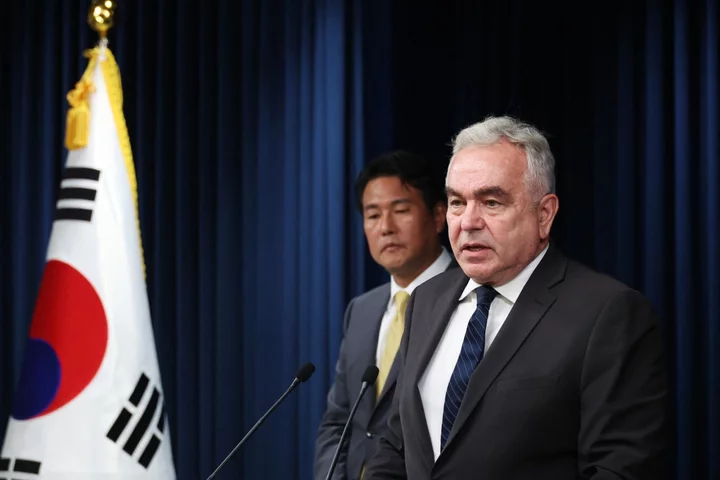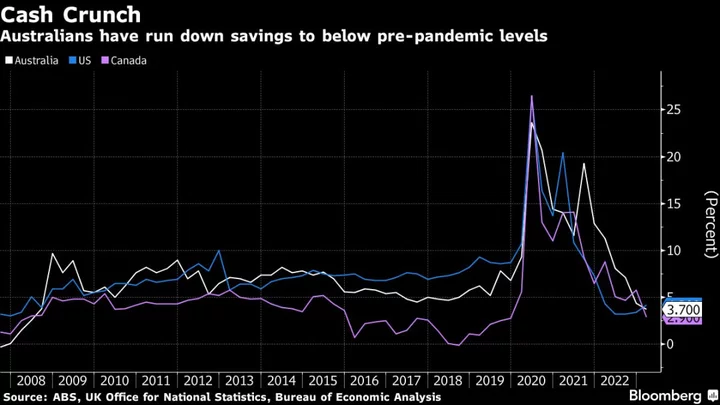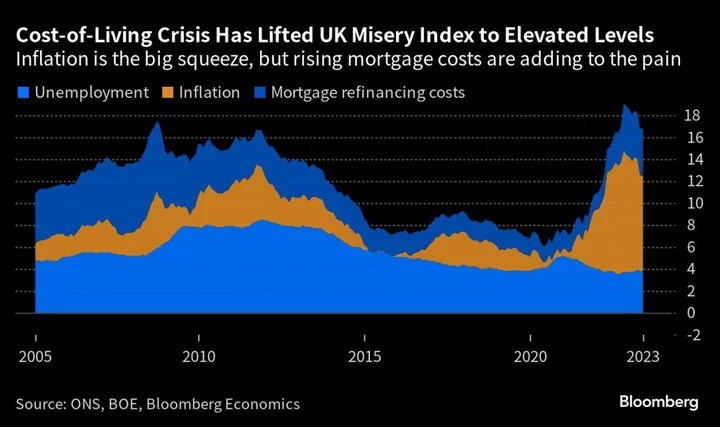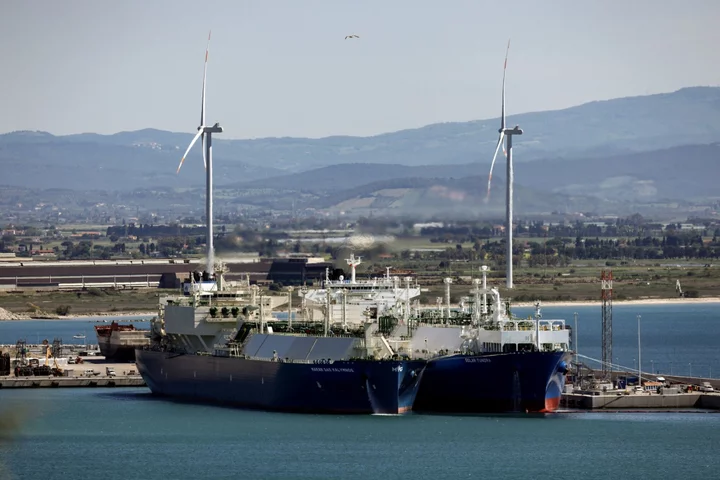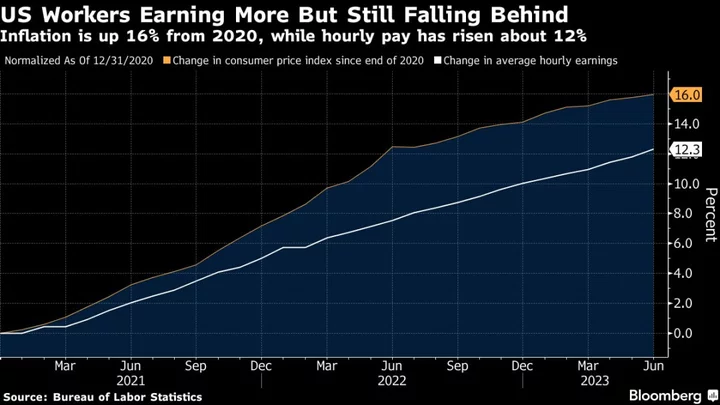How’s this for a difficult job: taking over from the founder’s grandson, who led the family business to the very top of its industry, and who’s still very much in the mix as paradigm-changing disruptors force the company to transform.
Such is the position Koji Sato was thrust into at Toyota Motor Corp. in April, taking over from Akio Toyoda, who became chairman. The Japanese manufacturer is making and selling more cars than ever, and yet battery-electric vehicles are a “missing piece” in its vast portfolio of products, Sato said in one of his first interviews since his promotion to chief executive officer in April.
Sato, 54, addressed this head-on during his first news conference after his appointment was announced in late January. His declaration that Toyota needed to have an electric vehicle-first mindset was welcomed by investors eager to see the company take on the likes of Tesla Inc. and BYD Co. But it may have been perceived by some as rocking the boat — Toyoda, 67, is one of the industry’s loudest proponents for decarbonizing cars gradually, using gas-electric hybrids, and for alternatives including hydrogen fuel cells.
“When we announced the new direction, when we used the phrase battery-EV first, that was seized upon,” Sato said in the interview on the sidelines of the Japan Mobility Show in Tokyo. “But that speech made clear that Toyota had a multi-pathway approach, and that various powertrains will be used.”
Sato discussed the extent of the change he’s witnessed at Toyota over his more than 30-year career, how the company is approaching EV development and more during the half-hour-long conversation. What follows are some of the questions (in bold) and answers from the discussion, which have been edited for length and clarity.
Akio Toyoda has described this moment as a “full model change” synonymous with when Toyota transitioned the family business from looms to car manufacturing. Would the Toyota of today have been unrecognizable to you when you joined the company in 1992?
The stance of making good cars hasn’t changed, but the company’s purpose has become clearer. Especially since Akio became president, the change has been bigger. His taking on the task of spreading happiness is at the heart of everything that we do. It’s very broad but extremely important for us.
Thirty years ago, one single answer was considered the best solution. Now, a single answer is not the best. We’re in a period when we need to address many different needs at once. That’s why we use the term multi-pathway. The biggest change that I feel in the past 30 years is that the purpose of the company has become very clear.
How difficult is it to reshape Toyota as a battery-electric vehicle maker in a country where EV sales are so low?
Developing BEVs and selling them as products doesn’t seem to be overly difficult to me. Toyota is a global company. Depending on the region, there’s a high need for BEVs, and there’s greater and faster demand for green energy. And for those areas, BEVs are a compelling solution.
Globally, however, our goals won’t change. Producing and selling BEVs will need to take the nature of the region into consideration. Localization then becomes an important factor.
Toyota has a new next-generation BEV platform under development for 2026, using completely new engineering, software and production methods. How difficult is it going to be to do so much change at the same time? Will Toyota encounter “production hell?”
The platform we are thinking about consists of three layers. There’s the underbody, the software platform, and the application platform. Those three as a set enables the platform to work together, and they are being developed simultaneously.
I can understand the concern that it’s overly complex. But unless we have a good software platform, we can’t have a good body structure. The actuation and performance changes depending on usage. So those three, this triangle, work together. We can’t just say we’ll work on one because it’s difficult. The value borne out of the trinity, while managing risk, is what we’re working on.
Of course it’s a challenge, so the timeframe needs to be flexible, but we won’t launch something that’s imperfect because there’s a deadline. The fact that we’re making a new BEV is because that can have a ripple effect on the vehicles — for example, boosting efficiency — and there will be an impact on our cars that are not battery EVs.
You’ve said Toyota needs to have a BEV-first mindset. Toyota invested a lot in fuel cell electric vehicles, but industrywide, BEVs have pulled far ahead. How committed are you to continue to invest in FCEV? At what point do you decide BEV is the way?
When we announced the new direction, when we used the phrase battery-EV first, that was seized upon. But that speech made clear that Toyota had a multi-pathway approach, and that various powertrains will be used.
BEV was the missing piece. If BEVs are to be developed from now on, that would be not be part of our conventional development process, but a new development approach. Unless we focus on a process to develop BEVs, all we would be doing is changing the powertrain and not making the BEV that we would want to make. That’s why I emphasized the importance of a battery-first way of thinking.
That doesn’t mean Toyota will only do battery EVs from now on. When considering hydrogen, the most important thing is energy security. Depending on a single source carries higher risks, so it’s important to be flexible. There’s no change in the goal of reaching carbon neutrality, and we think that hydrogen is an important energy source.
We want to be in a position to offer mobility based on hydrogen. Of course, electricity is important, but we think hydrogen is an important solution. Developing and producing hydrogen, and building the supply chain will take time. It’s getting bigger, but it will take time. We need to boost the amount used and prepare infrastructure. There’s less downtime than with recharging, so when considering it as a fuel source, we should start from commercial applications. So that’s where we’re moving, while taking alliances under consideration.
Toyota has been speaking with a lot of enthusiasm about solid-state batteries. How confident are you that the company will manage to commercialize this technology?
As we announced with Idemitsu, we are targeting mass production of solid-state batteries, and we have made a significant step.
With the Idemitsu partnership, on a laboratory basis, we are confident that solid-state batteries will become a reality. But as we move toward mass production and commericialization, we are starting the pilot project and will deal with challenges as they come. We have to speed up the cycle for doing that, and be agile.
Is this a potential leapfrog technology? Does it carry the potential for Toyota to go from BEVs being a missing piece, to becoming a leader in BEVs?
It’s just one variation. We don’t think solid-state batteries will be a game-changer just because we have them. The value of the product won’t be determined only by the battery technology being used.
We have bipolar lithium-ion batteries, and liquid-electrolyte battery performance will improve, as well. Batteries will also be multi-pathway. And at the very end, the question is what kind of car will be made.
--With assistance from Reed Stevenson and Masatsugu Horie.

